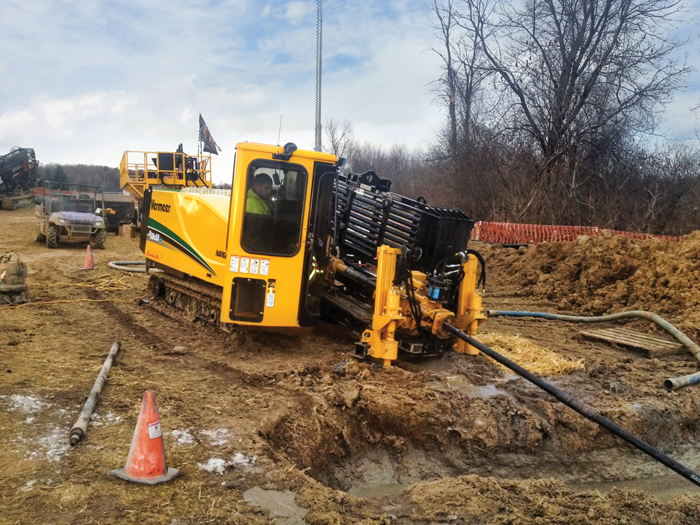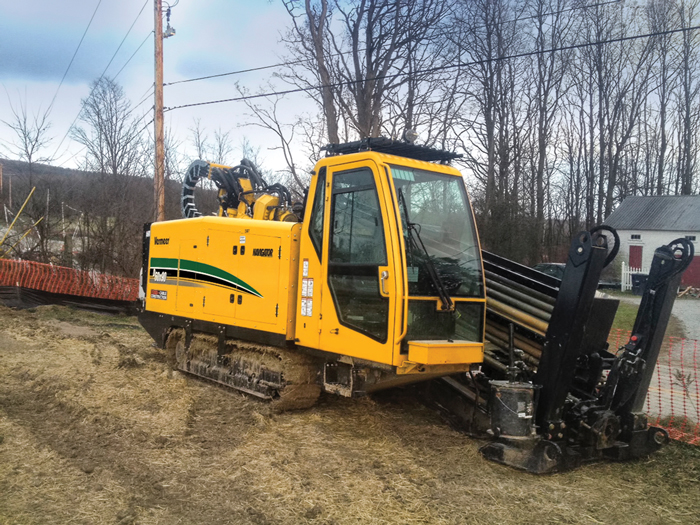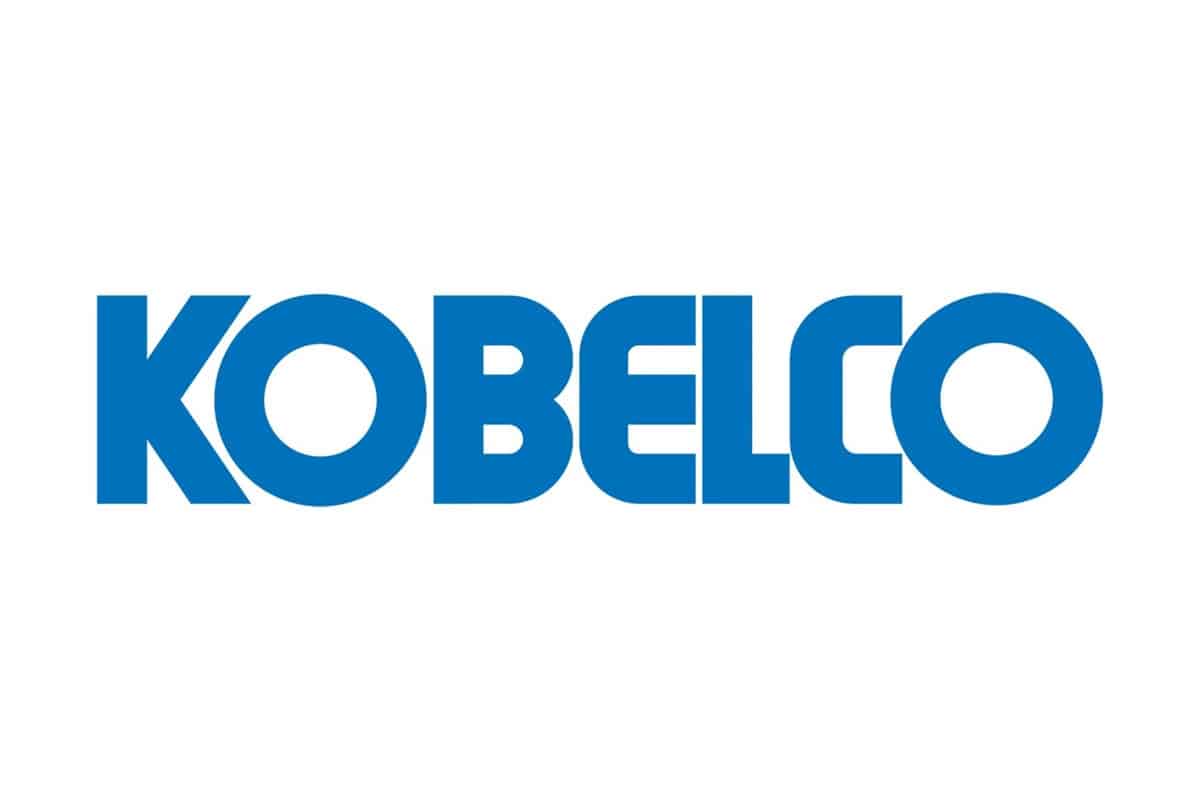Keeping an Eye on a Sensitive Ecosystem

Todd Warmingham knew these obligations and was called in to complete a gas line installation project through very arduous ground conditions, all while passing under protected wetlands.
Warmingham’s passion for and understanding of the horizontal directional drilling (HDD) industry made his company, Todd Cable Construction LLC, an ideal candidate for the job. While his company has been around in its current form only since 2005, Warmingham has fast built a reputation for quality workmanship.
“I began working after high school by installing cable TV wire. It wasn’t what I wanted, so I took my dad’s credit card and started DBA Todd Cable Construction,” says Warmingham. “When I started, all I had was myself, a small startup fund and a truck, and we have just grown from there.
“The initial focus of the company was building and constructing of fiber-optic networks. With the many variables that the fiber-optic cable construction company encounters, there was an inherent need for directional drilling.”
Warmingham’s company is now based out of Newport, N.Y., and focuses on directional drilling, but is also contracted for rock boring, aerial installation and cable plowing projects, among others. Warmingham and his employees have kept a finger on the pulse of the directional drilling industry, specifically HDD technology. As the field develops and demand rises, so does the need for more high-tech equipment and individuals to operate it.
“Technology is continually improving the drilling operation, making our drills more accurate and allowing our operators to maximize the drill rigs’ full operational capacity,” says Warmingham.
It is this attention to the industry as a whole that made Warmingham a suitable candidate for a precarious drilling project in the protected wetlands of upstate New York. St. Lawrence Gas was set to complete a gas line expansion in Malone, N.Y. Malone, located in the far northeast corner of the state and straddling the Salmon River, is home to the red spotted turtle.

In order to complete the gas installation project, St. Lawrence Gas needed a drilling company that could do the project with an eye toward protecting the red spotted turtle. Additionally, all companies involved needed to work within the rules and regulations set forth by the New York Department of Environmental Conservation.
Among the many specialties of Todd Cable Construction is the ability to work in protected wetlands and wildlife areas without upsetting the ecosystem. This ability was critical during the Malone project, which presented an array of environmental challenges: flood control, groundwater protection, erosion control and fish and wildlife habitat protection.
First, they needed to establish a low-impact jobsite. They moved the manpower and equipment from a central site using temporary roads. In order to transfer products in a more efficient manner, they established pumping stations that would limit the environmental impact. Once the temporary access was made, the equipment was mobilized to the site. The sites were kept compact, and pumping stations were installed for both fresh water and mud return.
Working within the parameters of environmental protection was just the start of the challenges that the crews needed to address.
Beneath the surface, glacial till material and solid rock formations existed in spades. In order to conquer the soil, the crew mapped out a thorough bore plan. They utilized a reclaiming system and sump pits with the Vermeer D36x50DR Series II Navigator HDD.
Because of the high concentration of rock in this area, the DR drill was in high demand for pilot boring. Once a pilot shot was made, a hole opener was utilized and trailing rods were affixed to the trailing end. After the hole was reamed to the required specifications, the larger machine was moved into position to pull back so that the DR drill could be moved into position for the next pilot bore.
The depth of the bores varied based on the surface landscape. Under the low-lying stream beds and wetlands, they drilled at a depth of 20 ft, and for the river crossing, they rose to 17 ft.
To achieve the necessary level of success, Warmingham turned to the D36x50DR rock drill. They augmented that with a D100x140 Navigator drill and a D60x90 Navigator drill. According to Warmingham, the combination was specifically chosen so they could achieve the required drilling capacity for the challenging terrain.
“The dual rod system on the DR drill gave us the ability to drill through the rock in a timely fashion,” says Warmingham. “The D100x140 and D60x90 gave us the pullback power required for the material we were installing. It also allowed us to free up the DR drill for the next rock shot while the other machines performed the back reams.
“The tooling required for this particular terrain is changing constantly, and the operating pressures vary greatly. The experience gained by our staff while utilizing new tooling is a lesson that is invaluable while continuing to drill in this environment.”
Not only did the company and its employees learn more about their capabilities and the industry as a whole, but they also learned about the importance of a rock drill as part of a fleet. They significantly cut down on job time and man hours. The D36x50DR drill worked continually and was constantly in motion while the crew was on site. According to Warmingham, this “sense of accomplishment drives the men on our crews and continues to make each one of their drill projects a success.”
With a little ingenuity and a lot of planning, Todd Cable Construction LLC was able to enter the wetlands and exit without disrupting the delicate balance, even while battling solid rock beneath the picturesque natural landscape.
Darrin Cline is a Features Writer for Two Rivers Marketing, based in Des Moines, Iowa.




